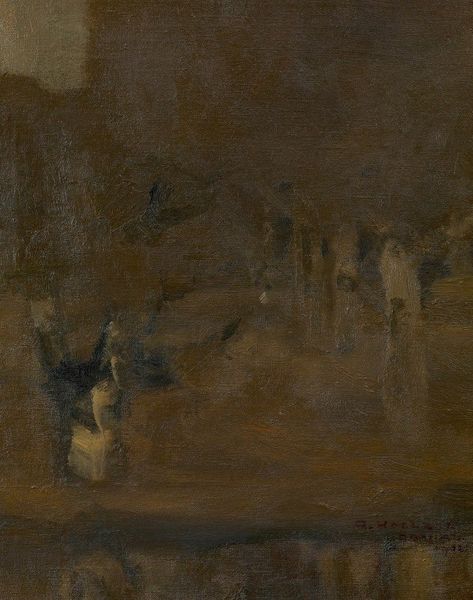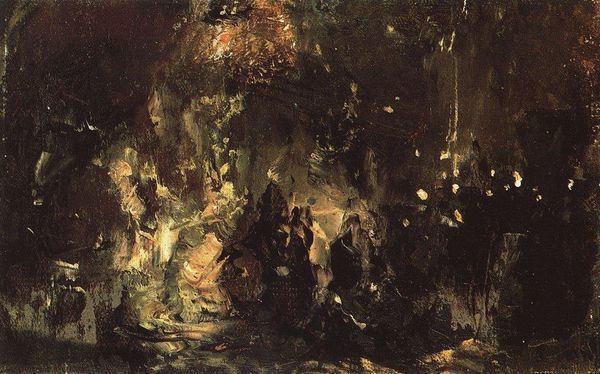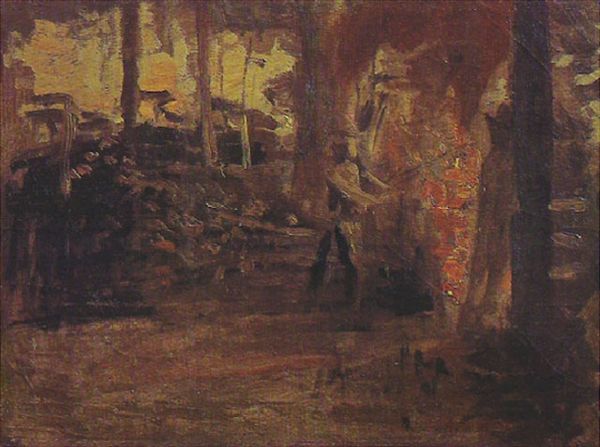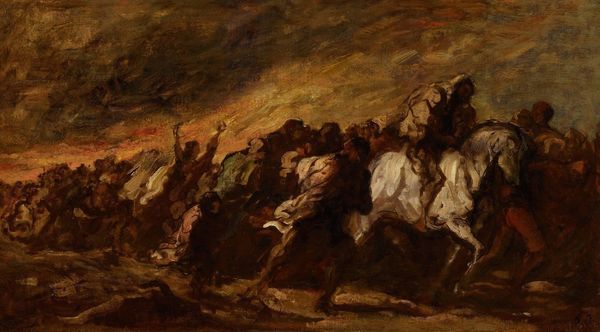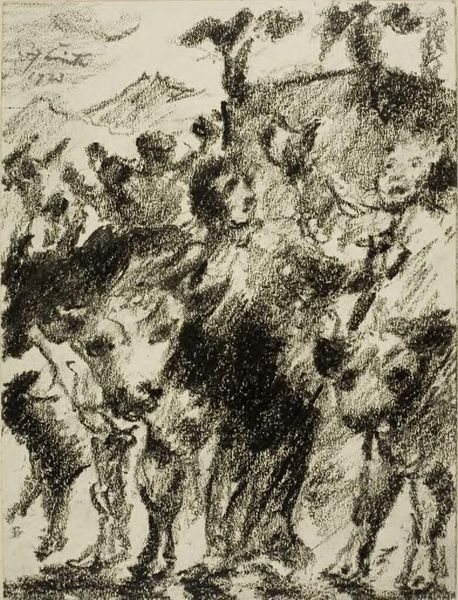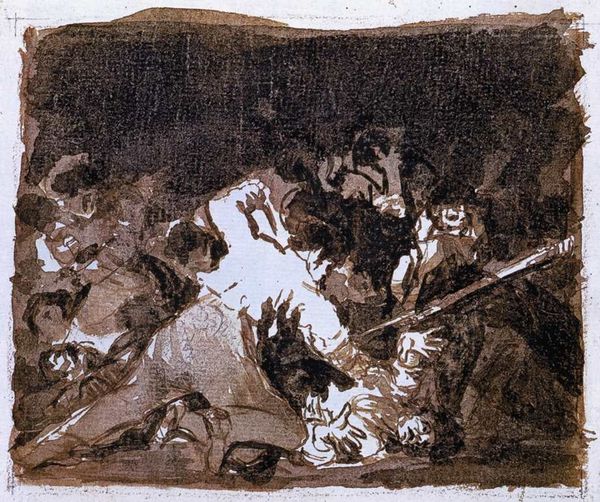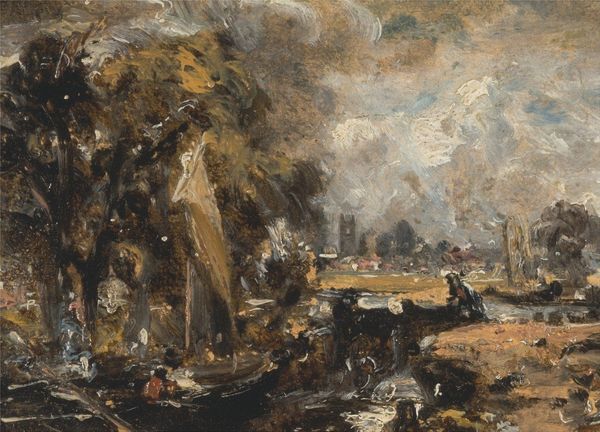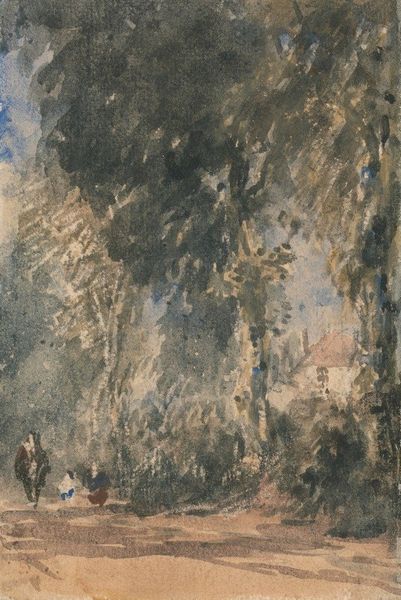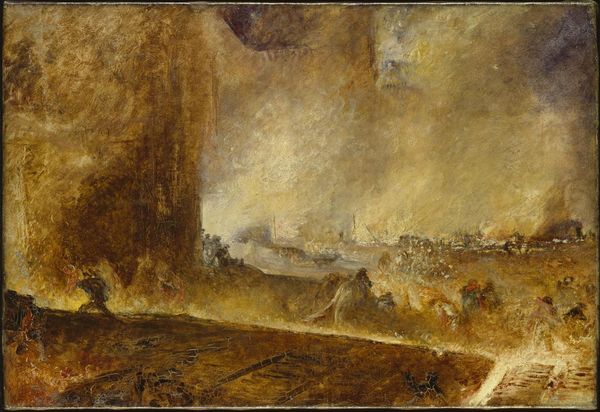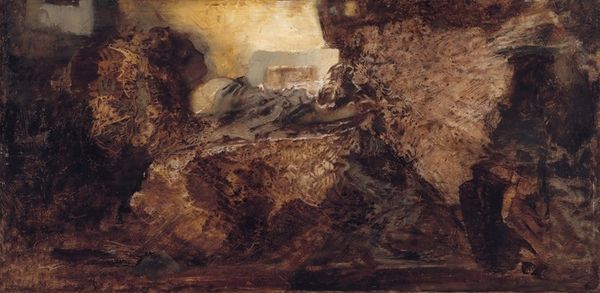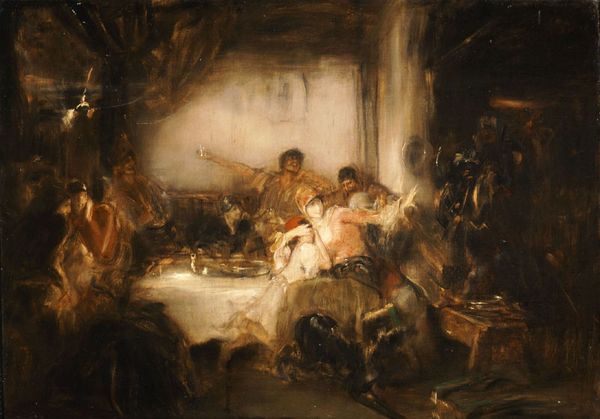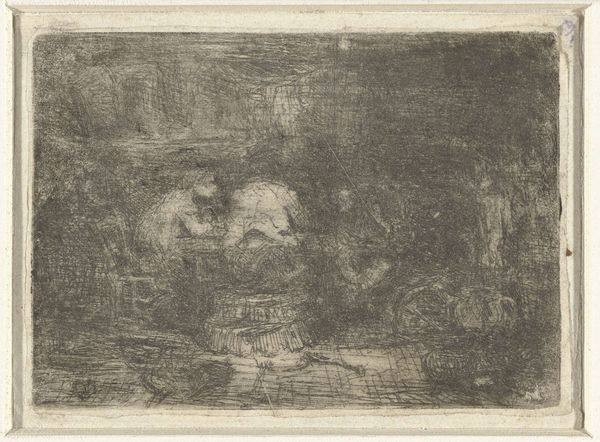
drawing, painting, oil-paint
#
drawing
#
painting
#
oil-paint
#
charcoal drawing
#
figuration
#
history-painting
#
academic-art
Dimensions: 147 mm (height) x 217 mm (width) (bladmaal)
Editor: Here we have Jean-Baptiste Carpeaux's "The Death of Ananias," an oil painting made between 1869 and 1872. It definitely evokes a sense of chaos and darkness. What sort of underlying themes do you see emerging from this scene? Curator: Notice how the artist uses light and shadow – or rather, the dramatic contrast between them? In art, particularly during Carpeaux's time, this technique – chiaroscuro – wasn't merely about aesthetics. It served as a potent symbol, right? Editor: A symbol for... what exactly? Curator: Think about the biblical narrative. Ananias lied, betrayed a sacred trust. So, ask yourself: what does darkness typically represent in cultural memory? And conversely, what about light? Carpeaux masterfully employs those pre-existing associations to heighten the moral and emotional impact of the story. The people cloaked in shadow, perhaps represent their lack of understanding? Editor: That makes sense. And the brighter figures could be seen as the truly righteous ones. So, this play of light isn’t just a visual effect; it’s deeply rooted in symbolism, influencing how we, even today, respond to the artwork's message? Curator: Precisely. It speaks to the enduring power of visual language in shaping cultural and religious understanding. How do we learn to think about death by the way this artist represents it? Editor: I never thought of the technique as integral to the artwork's story. This really expands my understanding of history paintings!
Comments
No comments
Be the first to comment and join the conversation on the ultimate creative platform.
